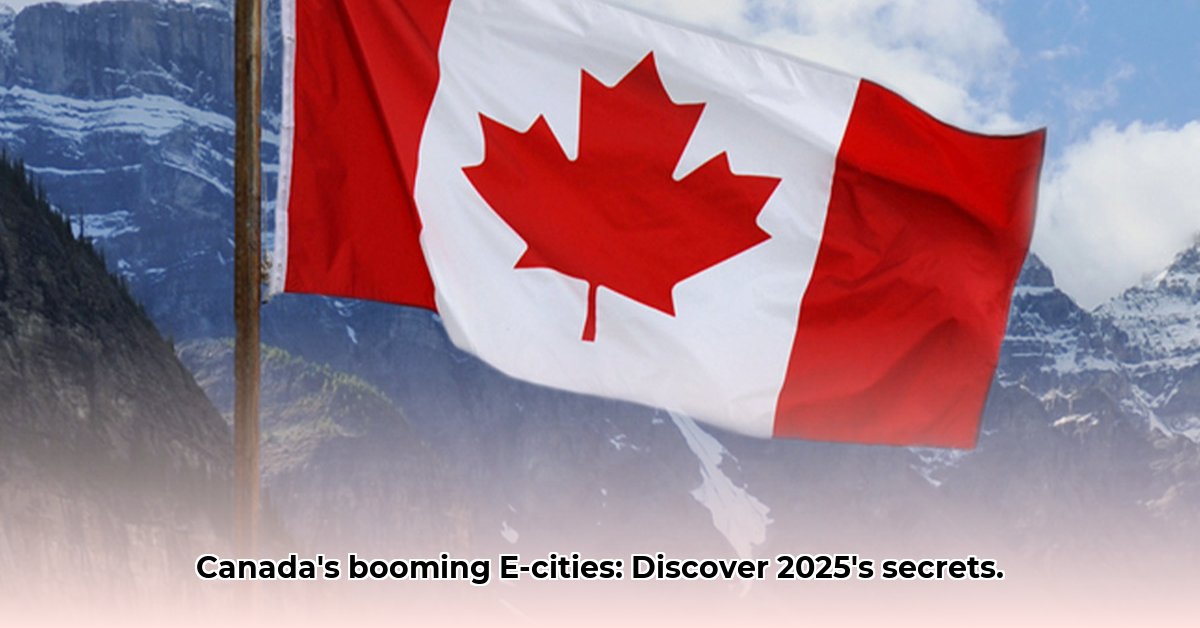Curious about Canada’s “E” cities? This article explores their diverse economic landscapes, unveiling the unique characteristics that define each. From bustling metropolises to smaller towns, we examine their history, industries, and future prospects. Discover the opportunities and challenges these communities face. Whether you’re a seasoned investor, a curious traveler, or simply interested in understanding Canada’s regional economies, this overview offers valuable insights. For a deeper dive, check out [this comprehensive guide](https://theblaregroup.com/cities-that-start-with-e/).
Canadian Cities that Start with E: A 2025 Economic Snapshot
Embark on a journey across Canada, spotlighting captivating cities whose names begin with the letter “E.” These urban centers, geographically diverse and economically distinct, offer a glimpse into the multifaceted nature of Canadian life, reflecting economic growth, tourism, and infrastructure. From bustling metropolises to smaller towns, they showcase the triumphs and challenges of economic growth and adaptation in the 21st century.
-
Edmonton, Alberta: The Prairie Metropolis
Edmonton, Alberta’s capital, is a dynamic city with a population nearing 1.5 million. Beyond its parks and arts scene, Edmonton’s economy is evolving. While energy remains a key sector, diversification is underway, with growth in technology, government services, and tourism. This diversification provides resilience against energy market fluctuations. The city is actively working to attract tech companies and expand green initiatives. The evolution of the energy sector will impact Edmonton’s economy, requiring strategic adaptation for long-term success. Recently, the Edmonton Metropolitan Region Hydrogen Task Force released a roadmap to accelerate hydrogen development as part of the city’s and the region’s broader economic diversification efforts.
-
Edmundston, New Brunswick: A River City’s Charm
Travel east to Edmundston, New Brunswick, a city of approximately 20,000 on the Madawaska River. Forestry and manufacturing define its economy, rooted in its history and development. Edmundston’s growth is measured, offering a unique character and close-knit community. Challenges include attracting new businesses and retaining young people. Leveraging natural assets like the river for tourism and supporting sustainable forestry practices offer opportunities. The city’s success depends on its natural resources and a strong sense of community. As of 2024, Edmundston announced the creation of the Madawaska Innovation Center, a project aimed at fostering technological innovation and entrepreneurship in the region.
-
Elliot Lake, Ontario: Resilience in the North
Elliot Lake, Ontario, has a population of approximately 10,000. Its history is tied to uranium mining, bringing both prosperity and challenges. Following mine closures, Elliot Lake demonstrated resilience. The city is working to diversify its economy, exploring tourism related to its history and natural beauty. Attracting new businesses and industries and supporting sustainable resource management are essential. Elliot Lake’s transformation exemplifies the tenacity of smaller Canadian communities facing economic shifts. The city is becoming known as a retirement community and hub for outdoor recreation. Recent initiatives include promoting the area as a four-season destination for fishing, hunting, and snowmobiling.
E-Cities: A Comparative Glance
| City | Population (approx.) | Defining Economic Features | Key Challenges | Promising Opportunities |
|---|---|---|---|---|
| Edmonton | 1,500,000 | Diversified (energy, technology, government), with a focus on sustainable and green economic development | Maintaining economic diversification, affordable housing, attracting and retaining a skilled workforce | Tech sector growth, sustainable tourism, public transit expansion, development of hydrogen based economy |
| Edmundston | 20,000 | Forestry, manufacturing, leveraging natural assets | Attracting new businesses, retaining residents, supporting local businesses, adapting to climate change | Sustainable forestry, river-based tourism, small-scale manufacturing utilizing locally-sourced materials, cross-border collaboration |
| Elliot Lake | 10,000 | Historically mining; diversifying now, with a focus on resource management and tourism | Economic diversification, attracting new residents and businesses, strategic planning for future growth | Tourism, sustainable resource management, attracting new industries, development as a retirement community |
These “E” cities highlight the dynamic nature of Canadian urban landscapes. They illustrate how cities focus on economic drivers and face challenges in their quest for growth. Their journeys offer insights into broader trends affecting Canadian communities. Sustainable economic development will shape the future.
Comparing Economic Diversification Strategies in Canadian Cities Starting with “E”
Key Takeaways:
- Canadian cities demonstrate resilience against trade challenges through diversification. Innovation is key.
- Innovation and technology drive economic growth in many cities.
- De-industrialization disproportionately impacts smaller cities, highlighting the need for targeted support.
- Regional economic disparities persist, requiring place-specific strategies.
- Successful diversification depends on local assets and effective government policies.
Explore the economic landscapes of Canadian cities beginning with “E,” examining their approaches to diversification. Comparing diversification strategies requires a multifaceted approach involving city size, infrastructure, and government support for small business.
Edmonton, Alberta
- Province: Alberta
- Population: ~1.5 million
- Brief History: Founded as a fur trading post, Edmonton’s growth accelerated with oil and gas.
- Economy: Energy, government, and technology are major sectors. Edmonton is actively reducing reliance on energy fluctuations through diversification into tech and innovation.
- Key Attractions/Characteristics: Vibrant arts scene, vast river valley parks, proximity to natural attractions.
Estevan, Saskatchewan
- Province: Saskatchewan
- Population: ~10,000
- Brief History: Founded on agriculture, Estevan’s economy transformed with the discovery of coal.
- Economy: Historically coal-dependent, Estevan faces challenges with diversification and attracting investment. There are ongoing efforts to attract new industries and support small businesses.
- Key Attractions/Characteristics: Rich history, close proximity to the scenic Souris Valley.
Comparing Edmonton and Estevan: A Tale of Two Cities
Edmonton’s journey contrasts sharply with Estevan’s. Edmonton leverages its size and infrastructure, attracting substantial investments in technology. Estevan, a smaller city, faces greater challenges because its reliance on a single resource sector makes it vulnerable to economic fluctuations.
Comparing diversification strategies involves analyzing factors like city size, existing infrastructure, and government support. Smaller cities need specific strategies to attract investment and reduce dependence on traditional sectors.
Strategies for Successful Diversification: Lessons from “E” Cities
What lessons can we learn? Successful diversification requires long-term planning. It’s about building on strengths while seeking opportunities. Investment in education and workforce development is critical. Attracting talent and fostering innovation are essential. Collaboration between government, businesses and residents is crucial.
Comparing diversification strategies also involves looking at policies and support programs offered at the municipal, provincial, and federal levels. These policies can act as powerful catalysts or hinder diversification.
Economic Diversification Strategies in Canadian Cities Starting with “E”
Key Takeaways:
- Canadian cities demonstrate resilience through diversification. Focus on affordable housing and skilled workers are needed.
- Immigration fuels population and economic growth in urban centers.
- Recovery from the pandemic is uneven across sectors. Public transit and office vacancy rates are key concerns.
- The effectiveness of diversification strategies varies widely between cities which relates to investment in technology.
- Strategic partnerships are crucial for navigating trade tensions. This includes strengthening ties with Asia and Europe, leveraging research institutions, and focusing on niche sectors.
- Government investments play a critical role in supporting economic diversification and infrastructure.
Exploring Economic Resilience in Canada’s “E” Cities
Explore the economic landscapes of Canadian cities beginning with the letter “E,” examining their strengths and challenges.
- Spiritual Connotation of Names Reveals Their Divine Meaning and Purpose - November 18, 2025
- Unpacking the Importance of Names in the Bible for Deeper Understanding - November 17, 2025
- Avery Biblical Meaning Infers Wisdom, Counsel, and Protection - November 16, 2025










